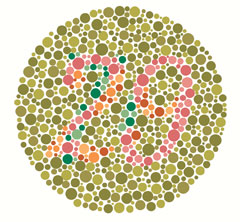Eye examinations for children are particularly important because they may reveal a sight condition that, if left unchecked, may seriously hamper a child’s development.
The NHS provides initial sight testing for babies and recommends regular eye examinations with an optometrist after the age of three years. At four, the child will have just entered school, or will be about to, and having normal eyesight is important to the child’s education as well as the rest of its development. It is therefore essential that any problem is identified before school, and that the eyes are re-checked at regular intervals throughout the school years. It is not necessary for a child to be able to read before having an eye examination. The optometrist’s skills allow defects to be recognised by using instruments and with simple tests that are appropriate to the child’s ability. It is particularly important for the optometrist to ensure that both eyes are developing equally and with binocular three-dimensional vision.
Here at Patricia Hayselden and Partners, we make going to the Opticians a fun experience. The eye examination tests are just like playing games. We also welcome adults with learning disabilities, who may also require the eye examination to be tailored to their ability.
Some common eye conditions found in children:
Dyslexia and Visual Stress
